Ruppert Towers 1, 1601 Third Avenue: Review and Ratings
between East 90th Street & East 91st Street View Full Building Profile


Ruppert Tower at 1601 and 1619 Third Avenue on the northeast corner at 90th Street is part of the large Ruppert Towers project that also includes the Yorkville Tower at 1623 and 1641 Third Avenue on the southeast corner at 92nd Street.
Both were designed by the architectural firm of Davis, Brody & Associates that created several huge residential complexes in the 1970’s that brought a bold, new, fortress aesthetic to the city’s skyline.
Ruppert Tower ranges in height from 24 to 34 stories high and was built in 1975. It has 549 apartments and was converted to a condominium in 2003.
Bottom Line
The southern building of the complex, this mammoth tower has many spectacular views and is convenient to numerous good restaurants, a great wine store and the fine schools in the nearby Carnegie Hill neighborhood.
Description
The building is very imposing and dominates its neighborhood with its mammoth slab of varying heights and staggered plans with chamfered corners only slightly mitigating their mass.
The entrance is indicated by a three-story-high arcade.
The impact of the huge buildings was not negative as they undeniably signaled significant new investment as well as a new high-rise aesthetic.
It faces its larger twin, Yorkville Towers, across 91st Street and at Third Avenue both buildings are set back to create triangular plazas with retail spaces.
Both buildings have nice sidewalk landscaping and there is a large garden at the east end of the south block across from the 40-story-tall Knickerbocker Plaza, the third major tower in the complex that is entered from 1749 Second Avenue and has 578 units.
Amenities
The building has a concierge, an elevator, a fitness center, laundry, a garage, a roof deck, storage units and a bicycle room.
Apartments
Apartment 23H is a two-bedroom unit with an 18-foot-long living room with a 13-foot-long angled dining room next to a 8-foot-long open kitchen.
Apartment 21K is a one-bedroom unit with an 11-foot-long entry foyer that leads to a 17-foot-long, angled living room with an 11-foot-long dining area next to a 9-foot-long, open kitchen with an island.
Apartment 17H is a two-bedroom unit with an 11-foot-long entry foyer that leads to a 18-foot-long living room with a 13-foot-long dining alcove next to a 8-foot-long enclosed kitchen.
Apartment 34B is a studio unit with a 23-foot-long living room and an enclosed 8-foot-long kitchen.
Apartment 18A is a three-bedroom unit that has a foyer that leads to an angled, 18-foot-long living room with a 7-foot-wide dining area next to an enclosed kitchen.
Apartment 23C is a one-bedroom unit with a 16-foot-long living room adjacent to an angled 12-foot-long dining room and an enclosed 8-foot-long kitchen.
Apartment 6J is a one-bedroom unit with a 23-foot-long living/dining room and an enclosed 8-foot-long kitchen.
Apartment 11F is a two-bedroom unit with an 18-foot-long, angled living room with a 10-foot-long dining area next to a pass-through 13-foot-long kitchen.
History
In “New York 1960, Architecture And Urbanism Between The Second World War And The Bicentennial,” authors Robert A. M. Stern, Thomas Mellins and David Fishman provided the following commentary about the redevelopment of the Jacob Ruppert Brewery site in Yorkville:
“The Jacob Ruppert Brewery, a local landmark and a lingering reflection of the area’s gritty, industrial past and its ethnic traditions, closed its doors on December 31, 1965. It had been founded in 1867 by a German immigrant and taken over in 1917 by the founder’s eldest son, Jacob Ruppert Jr. – a Tammany Hall-supported congressman, a noted bon vivant and later owner of The New York Yankees. The brewery eventually occupied thirty-five red-brick buildings that dominated the blocks between Ninetieth and Ninety-Fourth Streets, Third and Second Avenues, but by the 1960s labor problems and obsolete facilities doomed the operation.
“Four months after the plant’s closing, the city designated the twenty-acre four-block parcel a renewal site and commissioned Conklin & Rossant to devise a master plan. Their proposal called for two apartment towers, one forty-eight and one sixty stories tall, and four eight-story buildings organized around courtyards, the complex would contain a total of 2,500 high – and moderate-income units. In addition, the plan included a 4,000-student high school, a 1.5 acre public park, a movie theater, a restaurant and stories. A subsequent plan called for a luxury apartment building, which at seventy-eight stories would have been the world’s tallest.
“The linchpin of a new plan for the site, which was realized in 1975, was three immense towers designed by Davis, Brody & Associates. The buildings were financed with the support of the city, the state’s Mitchell-Lama program and the federal government. The stylistically consistent towers occupied three corners of a superblock site between Ninetieth and Ninety-second streets, Third and Second Avenues, with Ninety-first street treated as a cobblestone-paved pedestrian mall; a multilevel park and playground filled the site’s southeast corner.
“Like Waterside, the firm’s architecturally distinguished housing complex on the East River… the three complexly massed brick-clad towers incorporated vertical strips of windows and dark-metal spandrels, numerous chamfered corners and cantilevered elements. Ruppert Towers, occupying the east blockfront of Third Avenue between Ninetieth and Ninety-first streets, contained 549 units and ranged in height from twenty-four to thirty four stories; Yorkville Towers, located directly across Ninety-first street, contained 710 units and ranged in height from thirty-two to forty-two stories. Both buildings were set back from Third Avenue on large triangular plazas, flanked by ground level commercial spaces, that formed a monumental gateway to the pedestrian mall that bisected the complex. Occupying the city’s northeast corner, at Second Avenue and Ninety-first street, was the forty-story Knickerbocker plaza, which contained 578 units – 70 percent reserved for senior citizens and 20 percent set aside for low-income tenants.
“The journalist Alan S. Oser, writing in The New York Times, described the development as a ‘new colossus,’ and the critic Andrew O. Dean argued that the complex ‘has major problems, being too massive and densely populated for its site.’ Norval White and Elliot Willensky said that although the density of the complex was ‘Immense and overwhelming,’ the architects had handled the ‘unfortunate program in a sophisticated manner.’ They added, however, that ‘talent can’t save us from behemoths.’ August Heckscher, the former Park Commissioner and a long-time resident of the area, described the development as ‘sober in aspect and uncomfortably dense,’ but also characterized it as ‘an asset.’ ‘Today, a harmoniously integrated population gives new life to the surrounding streets.’”
Davis, Brody & Associates also designed for Richard Ravitch and the Longstreet Corporation, an affiliate of Lazard Freres, the investment bank, the Waterside complex on a two-level platform of parking for 700 cars in the East River between East 25th and East 30th Street, east of the FDR Drive, between 1963 and 1974. The complex consisted of four towers with a total of 1,470 apartments and 25 duplex townhouses as well as the United Nations International School designed by Harrison, Abramovitz & Harris. One of the four slender towers, all clad with “jumbo” brown brick, was devoted to affordable housing. Ada Louise Huxtable, then the architecture critic of The New York Times, wrote that “the design was able, sophisticated and creative.”
In their book, authors Stern, Mellins and Fishman observed that the Waterside complex “has an aggressive sculptural force, in part because of the cantilevered upper floors that were necessary to accommodate the larger apartments, but also because of he designers’ preference for Brutalist aesthetics.”
“In a 1975 assessment of Davis, Brody’s impact on housing in New York, Paul Goldberger praised Waterside, the firm’s best-known project, as being ‘a visually exciting form, a powerful anchor to the skyline at water’s edge.’ Although he acknowledged that there were some problems with the complex, such as its isolation from the best of the city, he felt that they were ‘relatively minor liabilities in a city so used to mediocrity in housing that it accepts the appellation of ‘luxury housing’ for Third Avenue sheet-rock sheds. Waterside was conceived as something more than that, and it is a piece of architecture that, whatever its flaws, truly ennobles both the city and its riverfront.’ By 1979, Goldberger’s judgment was harsher, particularly with respect to the plaza, which he found ‘psychologically cold on even the warmest summer’s day’ and in ‘desperate need for landscaping.’”
The authors also noted that the same architects designed the Cathedral Parkway Houses at 125 West 109th Street between Amsterdam and Columbus Avenues in 1975 in association with Roger Glasgow, stating that it was “an aesthetic cousin to Davis , Brody & Associates’ Waterside…, Rupert Towers…., and Harlem River Park Towers.” The 309-unit, moderate income complex,, consisting of one twelve-story and one twenty-story building separated by a multilevel courtyard, featured complex patterns of setbacks and cantilevered projections that established a strong sculptural presence.”
Also in 1975, Davis, Brody & Associates designed Harlem River Houses, two 44-story towers housing 1,650 low- and moderate-income families on a site between the Harlem River and the Major Deegan Expressway in the Bronx near West Tremont Avenue and Morris Heights. The towers were once again a variation on the design of Waterside and Ruppert.
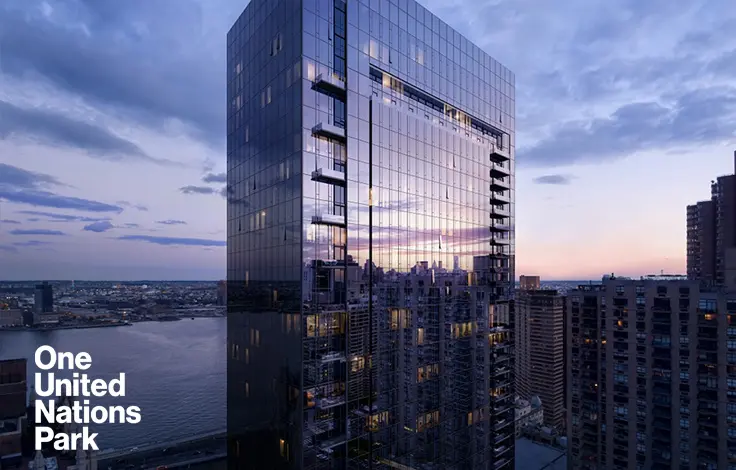
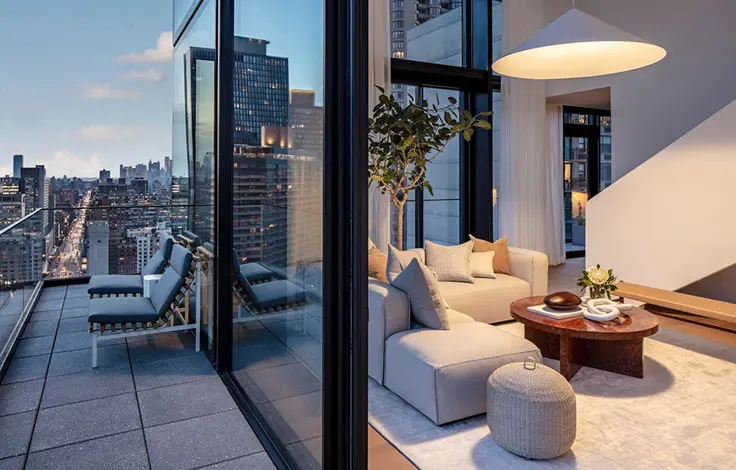
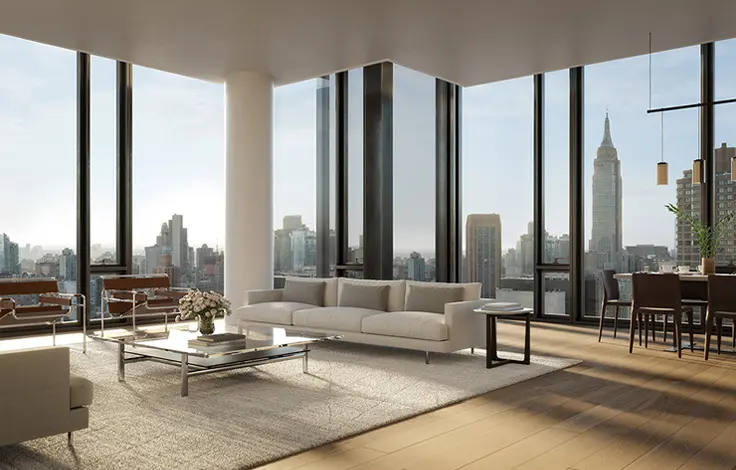
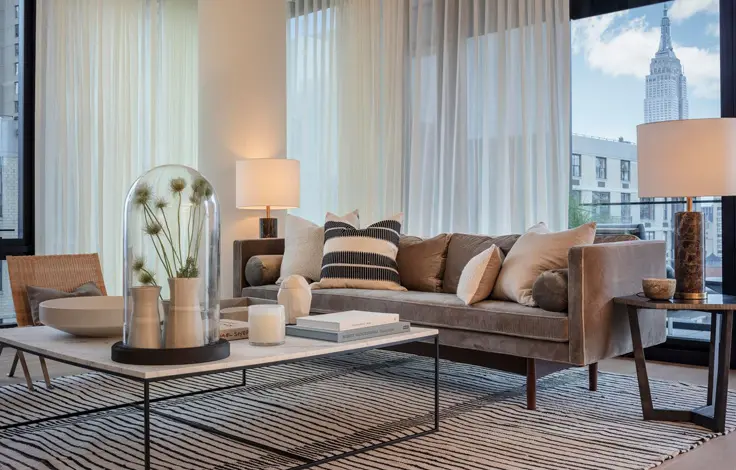
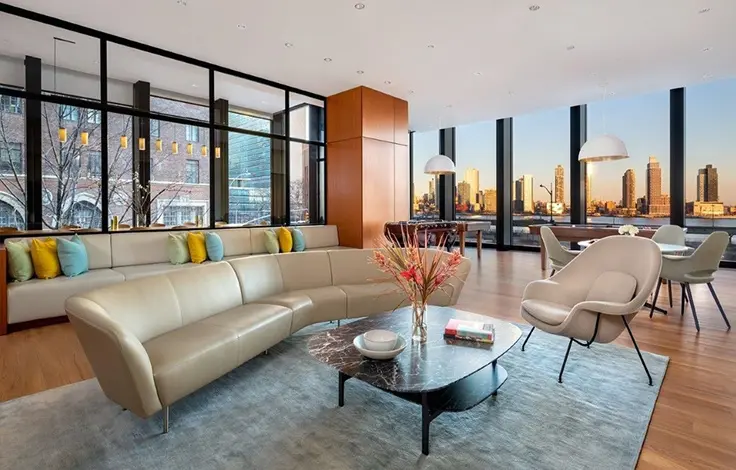
 6sqft delivers the latest on real estate, architecture, and design, straight from New York City.
6sqft delivers the latest on real estate, architecture, and design, straight from New York City.
